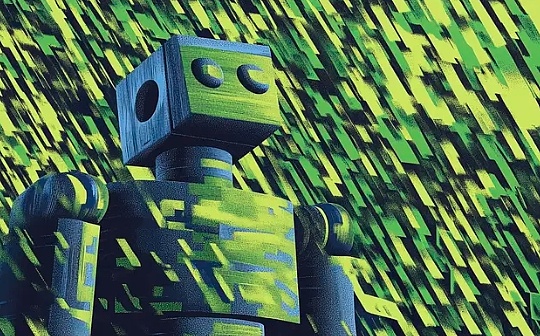100% surge in 10 minutes, AIOS token destruction and mainnet announcement set off the market

Reprinted from jinse
01/14/2025·25days agoAuthor: Revc, Golden Finance
At 10:28 am on January 14th, Beijing time, the AIOS token surged 100% in 10 minutes, once again igniting the Solana AI track. The market value quickly exceeded 176 million US dollars, giving a shot in the arm to the encryption market that hit the bottom the day before.
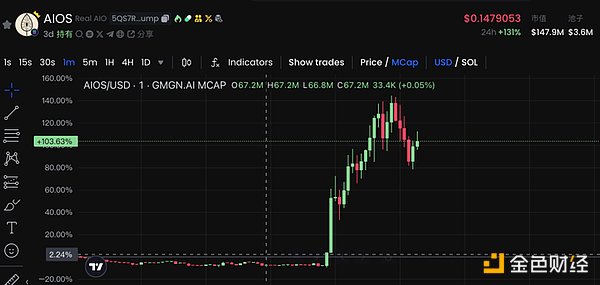
**The token destruction and mainnet announcement disclosed by official X
set off the market**
Important announcement from AIOS Foundation regarding $AIOS token
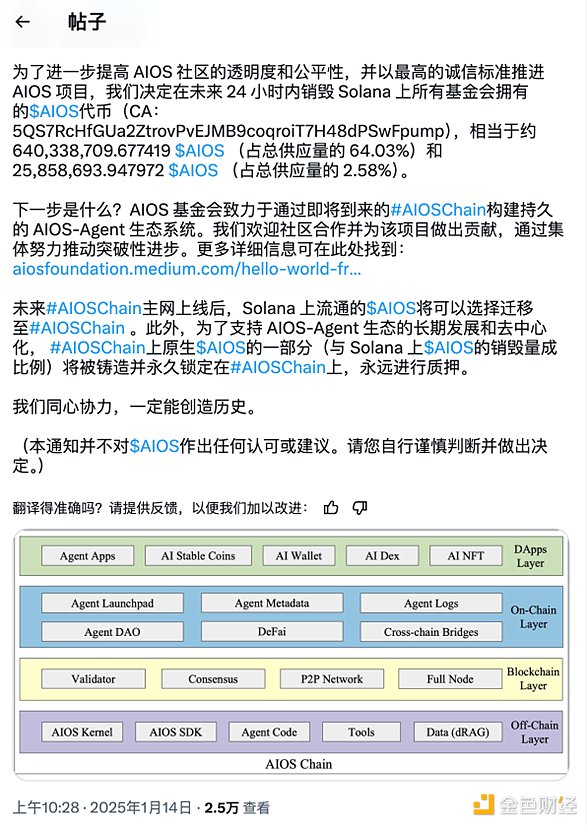
Token burning plan:
-
In order to improve community transparency and fairness, and to promote the AIOS project in accordance with the principle of integrity, the AIOS Foundation will destroy all $AIOS tokens held by the foundation on the Solana network within the next 24 hours, as follows:
-
Approximately 640,338,709.677419 $AIOS were destroyed (accounting for 64.03% of the total supply).
-
Approximately 25,858,693.947972 $AIOS were destroyed (accounting for 2.58% of the total supply).
Future plans:
-
Pushing #AIOSChain mainnet online
-
The AIOS Foundation is committed to building a lasting AIOS-Agent ecosystem and welcomes community cooperation to jointly promote innovative development.
Token migration and locking:
-
$AIOS tokens circulating on the Solana network will have the option to migrate to #AIOSChain in the future.
-
In order to support the long-term development and decentralization of the ecosystem, $AIOS will be minted and burned in equal proportion to the tokens on #AIOSChain, and these tokens will be permanently locked and pledged.
**From agent development to personalized kernel, a detailed explanation of
AIOS technology**
AIOS is an artificial intelligence agent operating system that embeds large language models (LLM) into the operating system and facilitates the development and deployment of LLM-based artificial intelligence agents. AIOS is designed to solve the problems encountered in the development and deployment process of LLM-based agents (such as scheduling, context switching, memory management, storage management, tool management, agent SDK management, etc.) and provide better services for agent developers and agent users. AIOS- Agent ecosystem. AIOS includes AIOS kernel and AIOS SDK (brain). AIOS supports both Web UI and terminal UI.
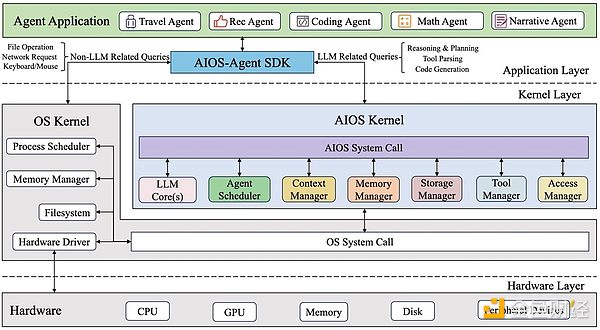
AIOS provides the AIOS kernel as an abstraction on top of the operating system kernel. The kernel provides core functionality driven by AIOS system calls to serve LLM-based agents. Above the kernel layer, the AIOS SDK facilitates agent development and deployment.
Different deployment models of AIOS
Before introducing the different modes of AIOS, you need to understand the following key symbols:
-
AHM (Agent Hub Machine): A central server that hosts an agent marketplace/repository where users can publish, download, and share agents. Serves as a distribution center for all agent-related resources
-
AUM (Agent UI Machine): The client machine that provides the user interface for interacting with the agent. This can be any device that supports agent visualization and control, from mobile phones to desktops.
-
ADM (Agent Development Machine): A development environment for agent developers to write, debug, and test their agents. Appropriate development tools and libraries are required.
-
ARM (Agent Runtime Machine): The execution environment where the agent actually runs and performs tasks. Sufficient computing resources are required to perform agent operations.
The following introduces the different modes of deploying AIOS.
Mode 1 (native kernel mode)
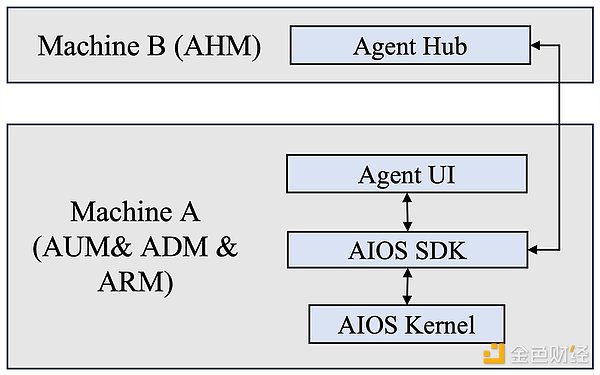
AIOS architecture in mode 1
feature:
-
For agent users: They can download the agent from the agent center on machine B and run the agent on machine A.
-
For agent developers: They can develop and test agents on machine A and upload the agent to Agent Center on machine B.
Mode 2 (remote kernel mode)
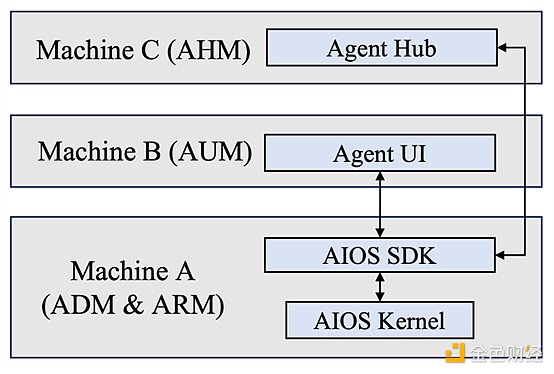
AIOS architecture in mode 2
feature:
-
Using the agent remotely: The agent user/developer can use the agent on machine B, unlike the development and running machine (machine A)
-
This benefits users who wish to use the agent on resource-constrained machines such as mobile or edge devices.
Mode 2.5 (remote kernel development mode)
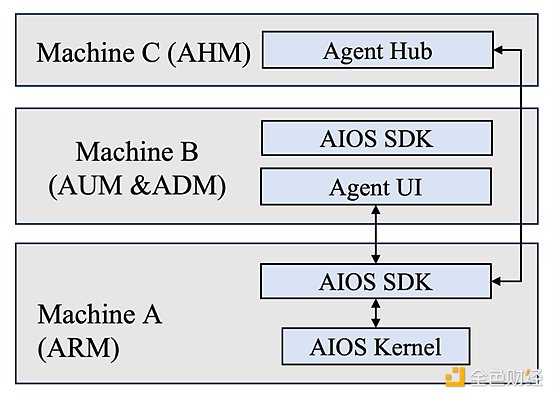
AIOS architecture in mode 2.5
feature:
Remote development of agents: The agent developer can develop the agent on machine B while simultaneously running and testing the agent on machine A. This is beneficial for developers who want to develop agents on resource- constrained machines such as mobile or edge devices.
Key technologies:
Achieve efficient data synchronization through network-based agent packaging and transmission protocols, enabling distributed agent development and testing.
Mode 3 (personal remote kernel mode)

AIOS architecture in mode 3
feature:
-
As long as each user/developer registers an account in the AIOS ecosystem, he or she can have his or her own AIOS and long-term persistent data.
-
Their personal data can be synced to different machines on the same account
Key technologies:
-
User account registration and verification mechanism
-
Provide persistent personal data storage for each user's AIOS
-
Synchronization of different AIOS instances on different devices within the same account
-
Data confidentiality mechanism
Mode 4 (personal remote virtual kernel mode)
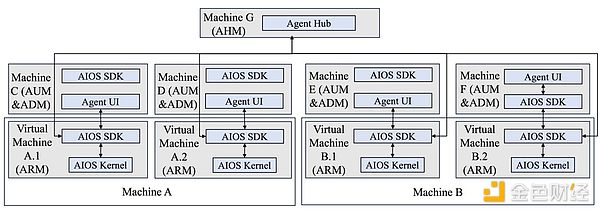
AIOS architecture in mode 4
feature:
Personal AIOS kernels of different users/developers can coexist on the same physical machine through virtualization
Key technologies:
-
Virtualize different AIOS kernel instances on the same machine
-
Scheduling and resource allocation mechanism for different virtual machines on the same machine
summary
AIOS follows the development trend of AI technology and innovatively optimizes natural language programming and workflow management by integrating large language models (LLM) into the core of the operating system, solving the limitations of traditional operating systems in AI agent scheduling, context management, etc. , showing significant competitive advantages. Against the background of the growing demand for enterprise-level applications, AIOS's unique positioning provides it with broad room for development. At the same time, it accelerates technology iteration and ecosystem expansion through open source projects, further enhancing its market penetration capabilities.
Although AIOS performs well in terms of technological innovation and market potential, as an emerging field, it faces challenges in technological maturity and market acceptance. AIOS needs to continuously optimize technology to ensure stability and reliability, while cultivating market recognition for new AI operating systems, especially in terms of enterprise-level applications and security. In addition, competitors with similar products may appear in the future, which will also pose a potential threat to AIOS.
After AIOS experienced a round of surge, the market value fluctuated around US$48 million (after destruction), and the number of currency holding addresses increased from 8,200 to 9,500 (OKX showed 17,000). Investors need to wait and see carefully and continue to pay attention to project dynamics, combined with the overall market Make investment decisions based on trends. In addition, it should also be noted that the announcement stated that AIOS will be minted and burned in equal proportions of tokens on AIOSChain. This part of the tokens will be permanently locked and pledged. The relevant details are yet to be further disclosed by the official.

 chaincatcher
chaincatcher
 panewslab
panewslab